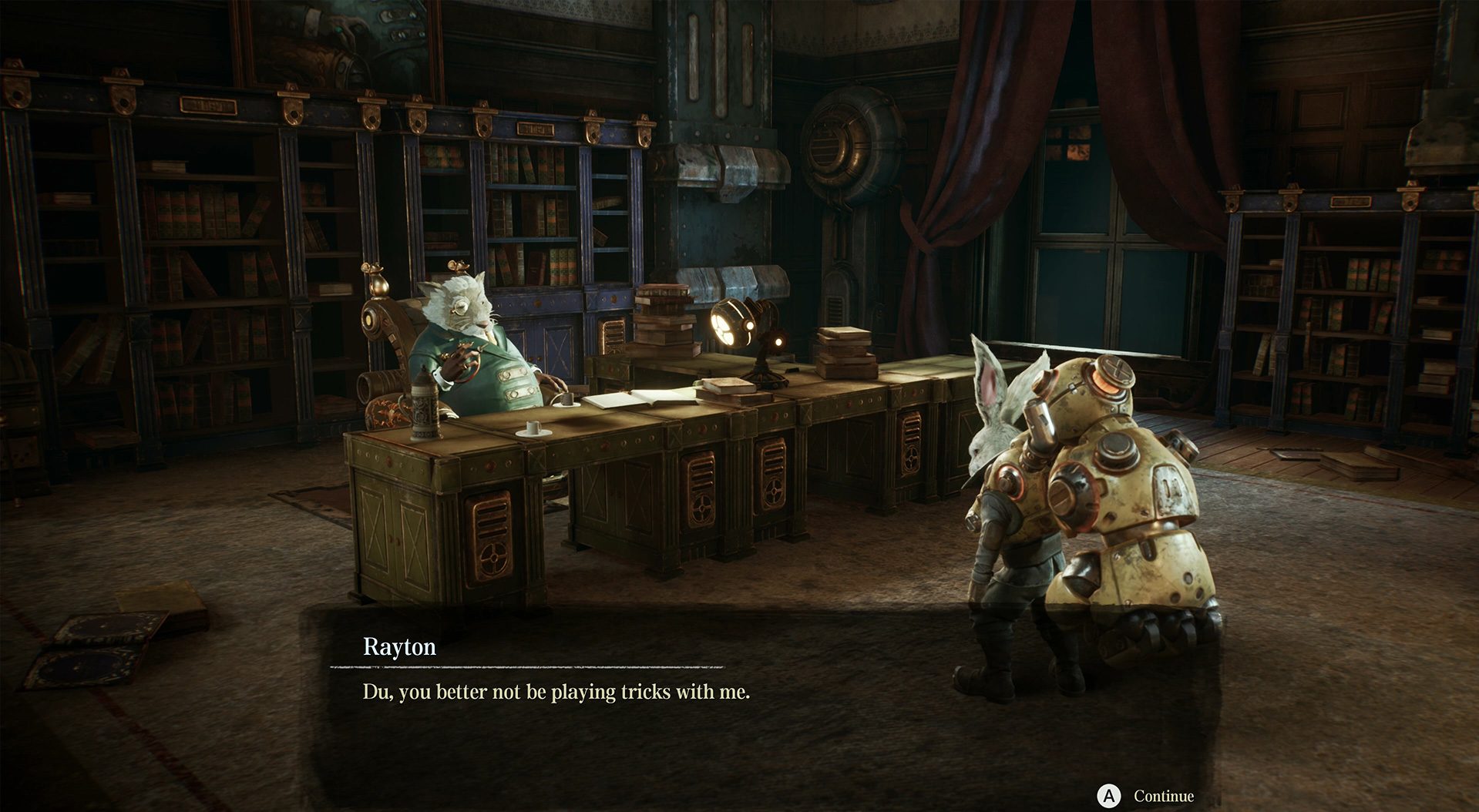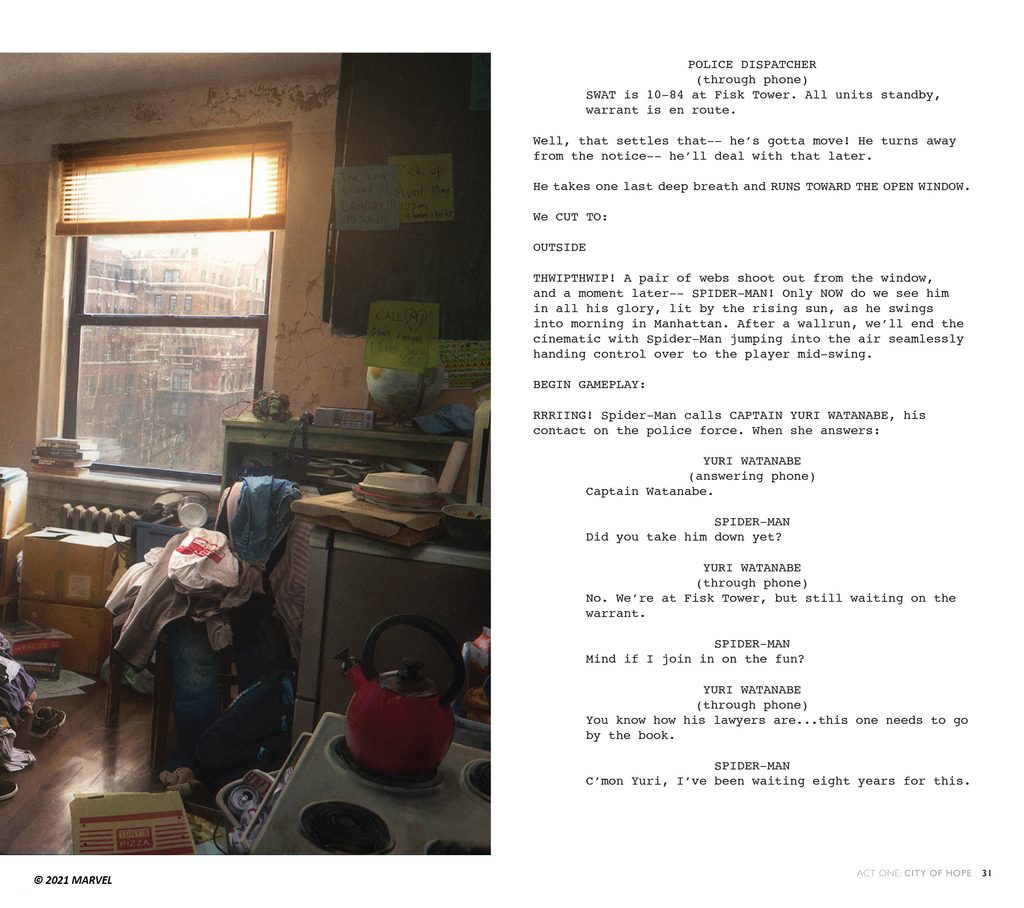Writing for Video Games – Part 1: Balancing Story with Gameplay

Interesting worlds and characters serve as the foundation for nearly all of PlayStation’s exclusive experiences, new and old. From the classic adventures in Naughty Dog’s Jak and Daxter series, Insomniac Games’ Ratchet & Clank series, and Sucker Punch’s inFAMOUS all the way to recent hits like Ghost of Tsushima, The Last of Us Part 2, and Marvel’s Spider-Man: Miles Morales, PlayStation has always embraced incredible storytelling. However, writing for video games goes so much deeper than the trials and tribulations of our heroes and villains.
While some understand the process needed when conceptualizing a game or driving a story forward, there are avenues where writing is employed that players don’t expect. Many have heard the words “narrative design” and thought it was merely a fancier way to describe games writing when, in actuality, they’re two different skill sets that work in conjunction. In our two-part series, we speak to some of the minds behind Marvel’s Spider-Man: Miles Morales, F.I.S.T.: Forged in Shadow Torch, and Maquette about what it means to write for video games, their respective career paths, and how aspiring writers can get into the industry.
First things first: What’s the difference between games writing and narrative design?
Games Writing vs Narrative Design
“The short answer is ‘it depends,’ says Mary Kenney, Advanced Writer with Insomniac Games. “The slightly longer and more helpful answer is it depends on the studio and project. Typically, a game writer focuses on story and characters, themes. We also plot out and create methods of delivering the story in the game, like cutscenes, gameplay VO, or text. Then we, you know, write all of that. Narrative designers layout levels, hook up voice-over, and match gameplay mechanics with story beats and pacing. The truth is, there’s a lot of overlap, and duties vary from project to project. In my time as a game writer, I’ve been called a writer, narrative designer, narrative writer, story designer . . . the list goes on. It just depends what your focus is on any given project.”
“Specifically for Maquette, the narrative design was the overall experience – the moods, the music, the visuals, the puzzles, etc, and the writing was just a subset of that,” says Hanford Lemoore, writer with Graceful Decay. “Maquette is kind of unique because the main premise of the game is never addressed in the writing. The writing never talks about the recursive world, the puzzles, why there’s a giant dome over everything. But the writing is very important because it’s the themes of the story that give the players all they need to connect those dots on their own.”
In the opinion of Isaac Zhang, Producer of F.I.S.T.: Forged in Shadow Torch, “you will face obstacles in game writing, especially for the construction of the game world, because players are always expecting a unique fantasy and surreal world. However, there are some games based on real-life as well. The narrative design is what the players will experience within a plot that has been separated into 50 paragraphs in 20 hours walkthrough time.”
Story vs Gameplay
When considering a video game writing career, it is key to expand your understanding of what “story” means. “Every element in your game is telling the story,” Kenney says. “Story doesn’t just mean writing or dialogue.”
“The furniture in a character’s bedroom; the score playing over an establishing shot; the weather during an action set-piece; the verbs available to the player, like run/climb/jump/swim,” she expounds. “As a writer, words are just one of many tools in your toolbox. Working closely with the people creating the other tools is critical to making a fantastic gameplay experience.”

Lemoore and Zhang, on the other hand, offered up best-practices when it comes to how your story is told. “Early on, you need to look at your game and decide how story and gameplay will co-exist,” Lemoore says. “Be honest with yourself about how storytelling will make your game better – some games don’t need a lot of story to be fun, and we’ve all played games where too much of the wrong type of storytelling has detracted from the experience, like long, unskippable cutscenes, or giant walls of text.”
“For a game like ‘F.I.S.T.’, the story needs to adapt to the gameplay and the game rhythm,” says Zhang. “You will find players have put down the controller to eat chips if you give them 10 minutes of narrative at once. That’s why we have to cut the story into several parts to fill in the walkthrough. Level design will also inspire the story when the designers come to you with new ideas that must be incorporated into the narrative.”
How Do You Get Into Video Game Writing As A Career?
There’s no one definitive path into video game writing but one prevailing theme is to be flexible and multifaceted. Zhang even joked that he only ended up focusing on writing because that was all that was left when working with great programmers, artists, and designers on the team.
“There is no obvious boundary of roles when working with an indie game team,” Zhang says. “You need to do different kinds of work. Writing for ‘F.I.S.T.’ was just a coincidence but, fortunately, our team liked the story and I enjoyed writing it as well.”
Mary Kenney started in a very different writing field, working as a journalist and magazine editor before studying gaming design in her mid-20s at graduate school. “A year later, I was recruited by Telltale Games at first as an intern, and eventually a lead episode writer,” she explains. She has been writing video games for the last five years and hasn’t looked back since.
“I grew up playing video games and always loved writing and reading,” she adds. “For me, video games create the same experience as reading a really good book — total immersion in a self-guided experience. After I became a writer, it took me a little while to understand that fiction and interactivity were what really interested me, but I’m so glad I made the jump.”
Continuing the Conversation
Words are the glue that makes all of the gameplay systems, settings, and items players collect come together in a cohesive and believable way. All of these things working together are key to immersion and we hope you’ve enjoyed learning about the job from some of the best development teams in the world, but this is only the beginning.
In the next part of this series, Kenney, Zhang, and Lemoore share their insight on writing for different types of games, processes, and collaboration.


